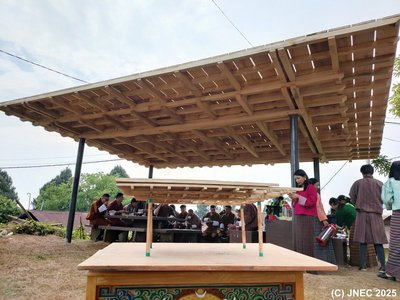

The course was conducted as part of the project Strengthening Capacity of Higher Engineering Education for Sustainable Buildings (HEESeB). It was designed to equip engineering professionals with a comprehensive understanding of key principles in timber engineering. The course was taught by distinguished professors — Prof. DI Michael Flach, Prof. DI Dr. techn. Anton Kraler, and Prof. DI Dr. techn. Roland Maderebner — from the Institute for Construction and Material Sciences, Unit of Timber Engineering, University of Innsbruck, Austria.
The course successfully concluded on 30 April 2025, and was marked by the inauguration of a Smart Timber Grid Shed, constructed by the course participants as part of their practical training. In addition, Prof. Henrik Davidsson and Ms. Marziyeh Taghizadeh from Lund University, Sweden, delivered more than 20 hours of guest lectures on energy efficiency in buildings, further enriching the participants’ learning experience.
Smart Timber Grids are spatial structures capable of bearing loads in two directions. Unlike simple beams oriented in a single direction, timber grids are redundant systems in which crossed layers of beams are interconnected, allowing the stronger members to support weaker ones in case of local failure. Individual weaknesses are compensated by the collective strength of the interconnected system, ensuring that failure occurs only at the group level. This enables higher load-bearing capacities using medium-strength materials, rather than being limited by the weakest element. Nature systematically employs redundancy to strengthen collective resilience through interconnection and symbiosis. Similarly, social and healthcare systems protect their most vulnerable members through the strength of the group.
